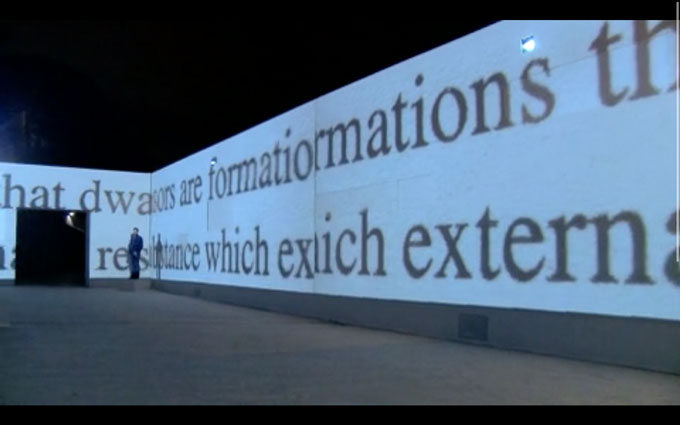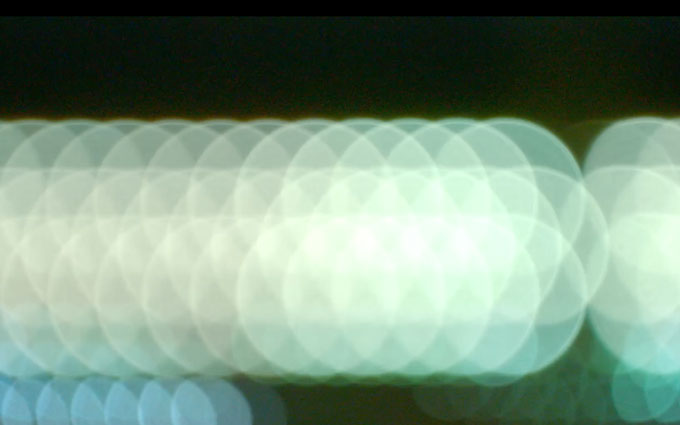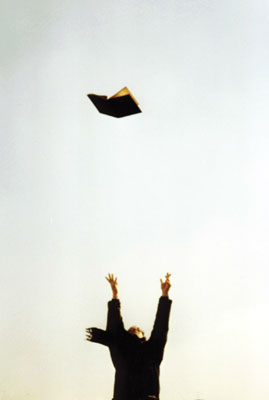we sat facing each other, fists pounding the table, plates rattling, scattering and shimmering on the wooden surface . like boiling water on the hood of a pick-up truck in the middle of a texan summer . two minds interlocked in a battle of differences . two opposing views, neither one understanding the complexities of their intents . the shouting got louder and the ability to rationalise increasingly became dimmer . loved ones dispersed, sheltering from the eruptions . we continued to shout . 'art is not art unless it is universal' thump ! the plates danced ... 'but hold on a sec, does that mean that i am not an artist because i am not universal?' no reply... 'art is only good when everyone recognises it ... like monet or michelangelo... that's what art is! bang! ... it went on like this and things shut down ... what began as a conversation, where the exchange of ideas and the sharing of experiences around a common space enlivened by the gift of food and drink, had now become, once again, a lecture . this is not normal i thought to myself . thankfully those days are gone .
dialogue
Converstations with Doug Aitkens : artist / interviewer / facilitator
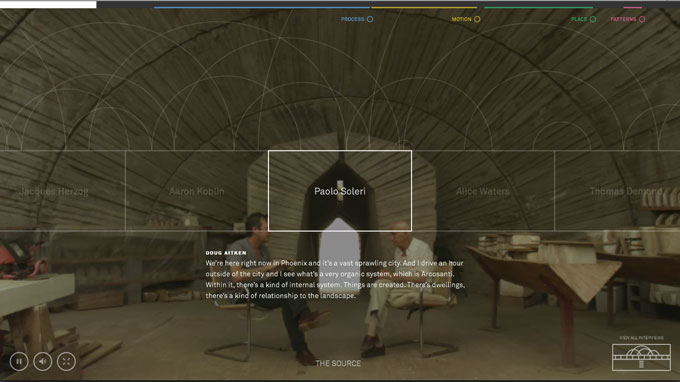 process | patterns | chaos | motion | place
process | patterns | chaos | motion | place
"Doug Aitken was born in California in 1968. He lives and works in Los Angeles and New York. Widely known for his innovative fine art installations, Aitken utilizes a wide array of media and artistic approaches to leads us into a world where time, space, and memory are fluid concepts [...] Aitken’s body of work ranges from photography, sculpture, and architectural interventions, to films, sound, single and multi-channel video works, and installations." Retrieved from http://www.dougaitkenworkshop.com/bio/
In this series of interviews Doug Aitken's talks with contemporary visual artists, musicians, architects and socially conscious individuals across a diverse range of topics, disciplines and practice. They discuss processes, inspiration and art making and of interest to me is his interview with artist Aaron Koblin and the underlying theme of patterns. Through out all of the conversations the presence of patterns and systems is touch on, whether they be organic in nature, constructed visually or assembled aurally they exist within all that we do which facilitates our connections to and with our social world.
Station to Station (http://stationtostation.com) is another Aitken's initiated project where a train ride "connect[s] leading figures and underground creators from the worlds of art, music, food, literature, and film for a series of cultural interventions and site-specific happenings. The train, designed as a moving, kinetic light sculpture, broadcasted unique content and experiences to a global audience [...]" which takes viewers on a "journey into the new cultural frontier." Retrieved from http://stationtostation.com/about/
http://dougaitkenthesource.com http://www.dougaitkenworkshop.com http://stationtostation.com
Esther Shalev-Gerz
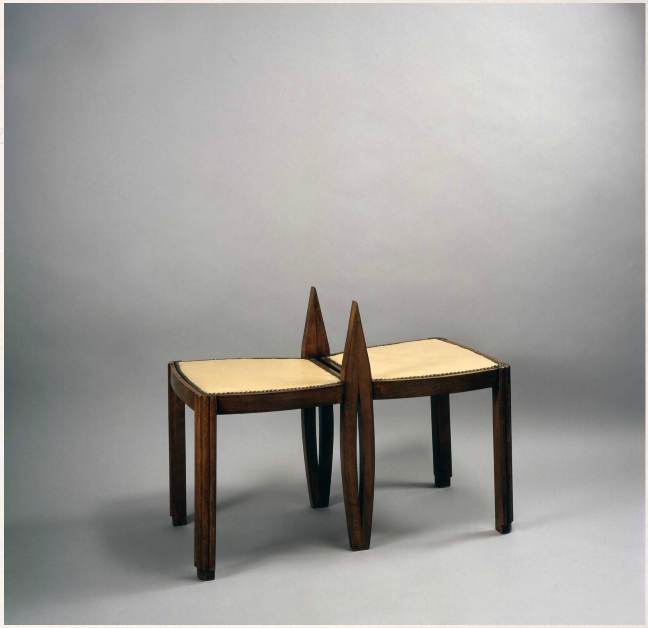
Esther Shalev-Gerz states "All my work is based on the potentiality of trust" (Shalev-Gerz, 2013). Her projects often express the narrative of a time forgotten which she then reinterprets as slices of time in the present. She has described the importance of memory in her works as an integral aspect of her site specific installations. The relationship between object and environment is how those moments are defined. Individuals who occupy the space in the past talk about their experience and their relationship with not only the physical space but the intent of the space and their interaction with others who use those same spaces.
Though we rarely speak of trust in relation to art, a work of art may well be the ultimate expression of trust. It is as if we trust, for instance, that some inked piece of paper or painted canvas will receive us and speak truly about our world and its own. It is this space of trust that enables dialogue to unfold. Dialogue is a group of people freely reaching a place and verbally exchanging thoughts in a present and immediate way whilst listening, not only to others but also to themselves with others, then coming together and exchanging again, and after having left, coming together yet again. Such gathering is never spontaneous; still, it must be proposed. (Esther Shalev-Gerz, The Trust Gap (2013). Retrieved from • / http://art-agenda.com/shows/art-and-theory-new-publications-by-esther-shalev-gerz/
“I do think all art springs out from an invitation, real or imaginary” (Esther Shalev-Gerz, 2010).
http://youtu.be/LP77WlRppAg
Artist's talk with Esther Shalev-Gerz at the Morris and Helen Belkin Art Gallery, January 12, 2013.
http://youtu.be/e_DXgVEMfvQ
The Artwork as an Act of Memory
For over 20 years her work has focused on interventions and projects in public space, taking the form of collaboration and exchange with the audience. Her installations and photographic work raise questions on group memory and its interaction with personal history and souvenir. In these commemorative monuments, installations, video and photographic works, questions about history are posed, and its relationship with collective memory is explored and investigated. Esther Shalev-Gerz: The Artwork as an Act of Memory. 2001 by: Contemporary Past. Retrieved from: http://vimeo.com/27525041
[vimeo 27525041 w=500 h=281]
Esther Shalev-Gerz: The Artwork as an Act of Memory from Contemporary Past on Vimeo.
Resources / images :
Cover image: DAEDAL(US), 2003. Intervention and Installation. Dublin, Ireland. Still image projections variable dimensions. 15 colour photographs - 65 cm x 53 cm. 15 diasec-mounted colour photographs – 108 cm x 80 cm.
INSEPARABLE ANGELS: AN IMAGINARY HOUSE FOR WALTER BENJAMIN, 2000. Installation. Collection of the Wanås Foundation, Knislinge, Sweden. 1 Double-faced clock - 60 cm. Double-seated chair – 82 cm x 65 cm x 43 cm.
BOOKS INHALED BY THE SKY, 1998. Video Projection - 14 mn.


